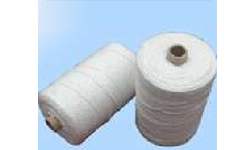
- High-temperature resistance: Ceramic fiber can withstand temperatures up to 2,300°F.
- Low thermal conductivity: It has a low heat transfer rate, making it an excellent thermal insulator.
- Corrosion resistance: Ceramic fiber resists chemical and corrosive attacks.
- Light weight: It is much lighter than other high-temperature materials, reducing the overall weight of equipment.
- Energy efficient: Ceramic fiber helps to reduce energy consumption by keeping the heat inside the equipment.
- Furnaces and kilns
- Boilers and steam systems
- Thermal insulation systems
- High-temperature filtration systems
- Aerospace components
- Automotive components
In conclusion, using Ceramic Fiber materials offers numerous benefits, including environmental advantages. Its thermal insulation properties reduce energy consumption and emit fewer greenhouse gases, making it a greener alternative to other materials. Ningbo Kaxite Sealing Materials Co., Ltd. provides various ceramic fiber products for industrial use. For more information, please visit their website at https://www.industrial-seals.com or contact them at kaxite@seal-china.com.
- Dai Yuanbin, et al. (2020). Preparation of ceramic fiber combined phase change material and its thermal management under high temperature. Energy, Volume 198.
- Gao Yali, et al. (2021). Numerical study on high-temperature mechanical properties of graded ceramic fiber reinforced metal matrix composites. Materials Science and Engineering: A, Volume 806.
- Pan Lingling, et al. (2019). Preparation and characterization of ceramic fiber reinforced magnetic coating. Ceramics International, Volume 45.
- Zhang Na, et al. (2020). A novel and low-cost cellulose aerogel/ceramic fiber composite with efficient and thermally stable ability for oil-water separation. Journal of Hazardous Materials, Volume 394.
- Lv Yulong, et al. (2021). Enhancement of continuous ceramic fiber reinforced aluminum matrix composites by additional reinforcements. Composites Science and Technology, Volume 198.
- Huang Tingting, et al. (2019). The preparation and properties of ceramic fiber-reinforced cementitious composite with lightweight aggregate. Construction and Building Materials, Volume 197.
- Wang Xiaofeng, et al. (2020). A cordierite-bonded corundum ceramic fiber insulation board prepared from blast furnace slag. Journal of the European Ceramic Society, Volume 40.
- Xie Weiguang, et al. (2021). Fabrication and mechanical properties of a tough ceramic fiber metal laminate. Journal of Materials Science, Volume 56.
- Chen Yanan, et al. (2020). A facile and insulating ceramic fiber reinforced ceramic aerogel through in situ polycondensation of a novel silane precursor. Journal of Colloid and Interface Science, Volume 564.
- Zhu Xuan, et al. (2019). Preparation of high-performance aeroengine ceramic fiber reinforced CoNiCrAlY composite coating by suspension plasma spraying. Surface and Coatings Technology, Volume 374.